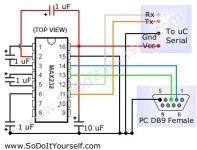Takemehome
1 kW
mwkeefer said:I have upped my lipo pack to 15s which I normally charge to 62.55v......this is a STOCK, uncalibrated infineon I am using now. I have upped the amps to 32.5 and changed the block time to 5 and the speed %2 = 120% but otherwise no hardware mods, no fet upgrades, no caps... no enhancements!!!!
This is good news... and we now know that the stock infineon will hold up to a 15s lipo voltage with NO ISSUES WHATSOEVER!!! I have logged 200-300 miles in this configuration (different current limits) at up to 30a nominal and have found this combination not only uber stable but F A S T!
Mike,
My 36V.22A. 9 fets Infineon controller can handle up to 62V.30A. without any hardware change ?
So, I don't need to buy a 48V. controller to run at 48V. ?
Now that's GOOD news indeed. 8)
THANKS




